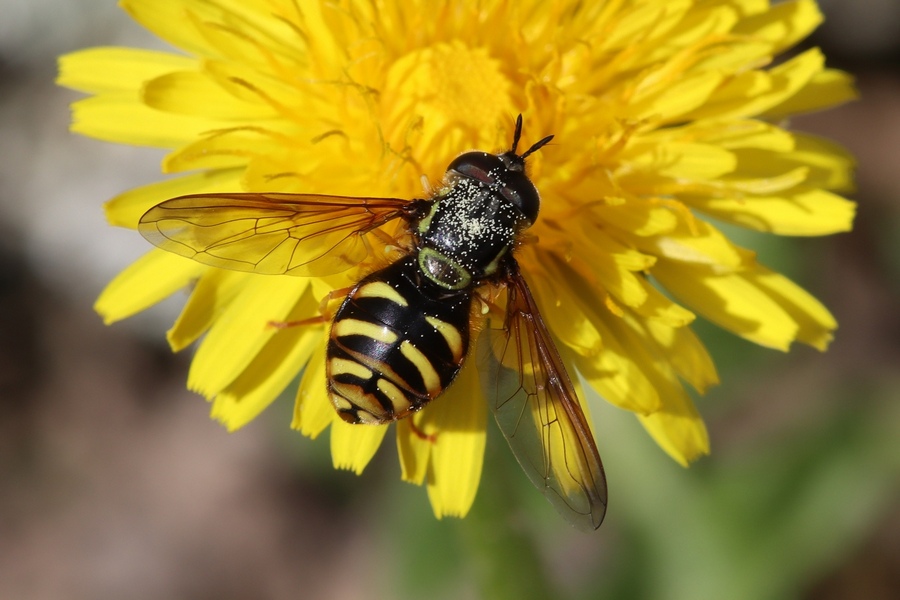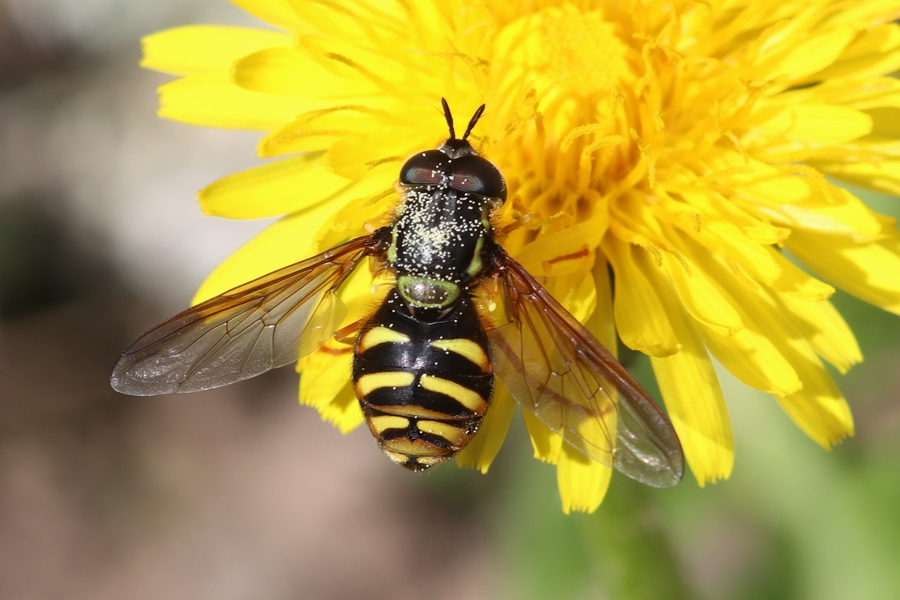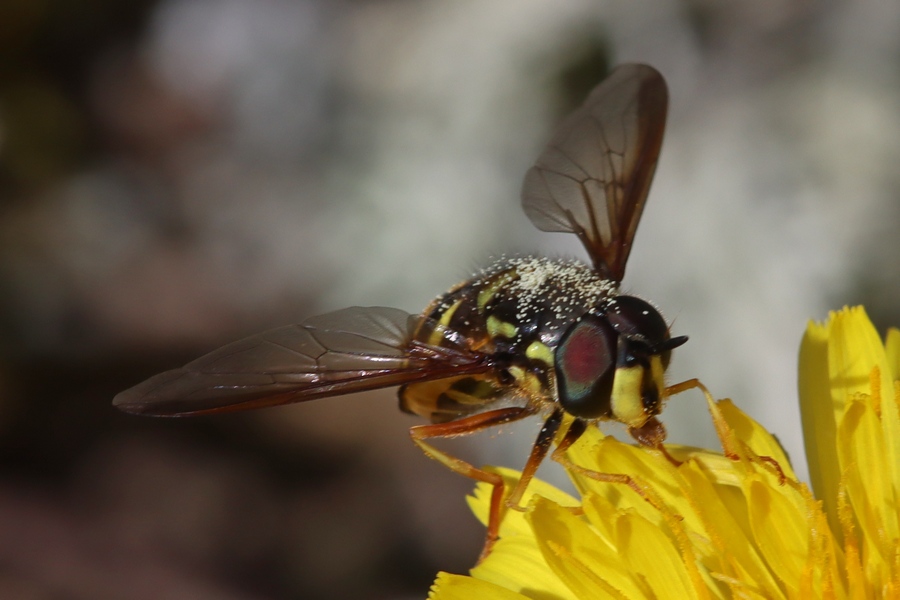Diptera.info :: Family forums :: Syrphidae
|
which Chrysotoxum? => Chrysotoxum lessonae
|
|
| Siegfried Rudolf |
Posted on 19-11-2024 17:37
|
|
Member Location: D / Staufen im Breisgau Posts: 400 Joined: 23.03.21 |
Hello everyone, I photographed this Chrysotoxum male on 13.04.24 at the edge of a forest in the southwest Black Forest (about 400 m above sea level). I think this could be Chrysotoxum intermedium, but does the ventral side match? Greetings Siggi Siegfried Rudolf attached the following image:  [179.86Kb] Edited by Siegfried Rudolf on 21-11-2024 09:17 |
|
|
|
| Siegfried Rudolf |
Posted on 19-11-2024 17:37
|
|
Member Location: D / Staufen im Breisgau Posts: 400 Joined: 23.03.21 |
pic. 2
Siegfried Rudolf attached the following image:  [207.78Kb] |
|
|
|
| Siegfried Rudolf |
Posted on 19-11-2024 17:38
|
|
Member Location: D / Staufen im Breisgau Posts: 400 Joined: 23.03.21 |
pic. 3
Siegfried Rudolf attached the following image:  [175.91Kb] |
|
|
|
| eklans |
Posted on 20-11-2024 18:19
|
|
Member Location: Franconia, Germany Posts: 4377 Joined: 11.11.18 |
Hi Siggi, I think you are right. It's name is actually C. lessonae: Bot, van de Meutter (2023): Hoverflies of Britain and North-West Europe Greetings, Eric |
|
|
|
| Siegfried Rudolf |
Posted on 21-11-2024 09:15
|
|
Member Location: D / Staufen im Breisgau Posts: 400 Joined: 23.03.21 |
Hi Eric, thank you very much for your answer. If I understand the wording in this book correctly, then Chrysotoxum intermedium and Chrysotoxum lessonae are two different species (they write about a complex) and all specimens found in Western Europe are Chrysotoxum lessonae. So C. lessonae is not just a synonym of C. intermedium. But that would also mean that C. intermedium does not occur in Germany. This must be a completely new knowledge. Greetings Siggi |
|
|
|
| eklans |
Posted on 21-11-2024 12:21
|
|
Member Location: Franconia, Germany Posts: 4377 Joined: 11.11.18 |
Hello Siggi, yes, it appears that there's a complex now including C. intermedium, lessonae and cisalpinum. The following is an excerpt of van Veen's key at home.hccnet.nl/mp.van.veen/KEYS/Chrysotoxum/chytox_key.html, which seems to be no mare available: 3.a. Abdominal margin of tergites entirely yellow; antennae: segment 3 of equal length as segment 1+2 together [frons yellow] -> Chrysotoxum cisalpinum Rondani Note: A marked character of specimens in the Zoological Museum Amsterdam (with abdominal margin entirely yellow and the antennal segment lengths as given above) is that they have a partly yellow frons in both male and female. This would make an easy characteristic against C. intermedium and C. lessonae. Seguy (1961) is cryptic about the male (antennal knob black), but describes for the female that there is a broad yellow band above the antennae. Sack (1932) describes the frons for both sexes as black. To complicate the matter further, some specimens in the ZMA are very close to typical C. cisalpinum, but their abdominal margin is black at the front of each tergite. They have a partly yellow frons. A study of type material is needed to check if both sexes of C. cisalpinum have a partly yellow frons and if the coloration of the abdomenal margin is more variable than assumed by Sack (1932) and Seguy (1961). 3.b. Frons black; abdominal margin black and yellow; antennae: segment 3 distinctly longer than segment 1+2 together -> 4 4.a. Tergite 2: spots form stripes that increase only little in width towards side margin -> Chrysotoxum intermedium Meigen Jizz: blackish Chrysotoxum, yellow bands run from hind corner of side margin to front middle. 4.b. Tergite 2: spots triangular, increasing in width to cover almost the entire length of the side margin, margin itself black in front, yellow in hind part -> Chrysotoxum lessonae Note: Addition of C. lessonae in this key is provisional. Sack (1932) is not very clear on this species and the above is also based on collection material of the ZMA. (In van Veen's Hoverflies of Northwest Europe of 2010 C. lessonae is not listed.) Greetings, Eric |
|
|
|
| Siegfried Rudolf |
Posted on 21-11-2024 13:40
|
|
Member Location: D / Staufen im Breisgau Posts: 400 Joined: 23.03.21 |
Thank you so much for your explanation Eric. You did a lot of work there. Research always leads to new findings that change many things. That makes things complicated, but anything else would be boring.  Greetings Siggi |
|
|
|
| Jump to Forum: |












